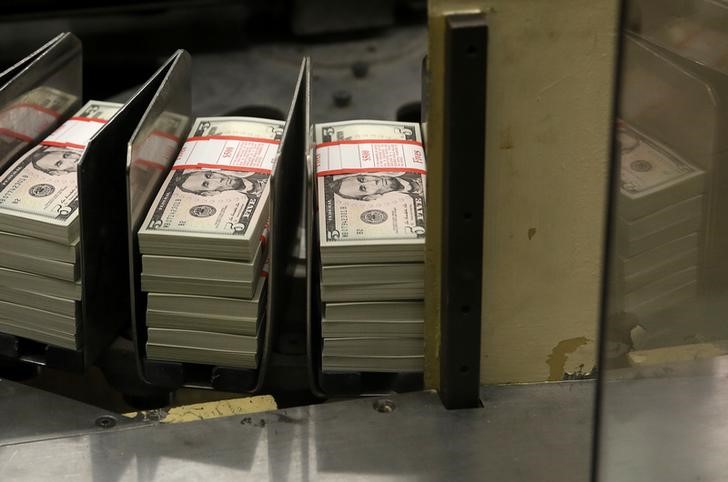By Geoffrey Smith
Investing.com -- The dollar consolidated at lower levels in early trade in Europe on Wednesday, after a sharp two-day drop driven by signs of weakening economic activity in the U.S.
By 3 AM ET (0700 GMT), the dollar index that measures the greenback against a handful of advanced economic currencies was at 93.765, effectively unchanged from late Tuesday but down over half a percent since the end of last week.
On Tuesday, fresh data had pointed to a further cooling-off in the U.S. housing market, with building permits and housing starts both falling. That came on top of industrial production data on Monday that showed U.S. factories increasingly struggling with supply chain issues.
As a result, investors have trimmed expectations of an interest rate hike by the Federal Reserve next year, having started to put some punchy bets on such a move in previous weeks.
The dollar has weakened in the last two days particularly against currencies where near-term interest rate hikes are more of a certainty. It lost another 0.1% against the New Zealand dollar to $1.3952, although it bounced by a modest 0.1% against sterling to trade at $1.3779.
Sterling failed to get any support from September inflation data released earlier, which showed a slowdown in monthly rates of both consumer and producer prices. The annual consumer price index came in a 3.1%, rather than the 3.2% expected.
The euro, by contrast, received more of a boost from another sharp rise in German producer prices, which added to suspicions that the European Central Bank is starting to fall behind the curve with regard to inflation.
Germany’s PPI rose by 2.5% on the month, and by 14.2% on the year, its fastest increase in over 10 years. Alexander Rakau of Oxford Economics pointed out, however, that by far the greatest component of the increase was energy prices, and noted that the monthly pace of core price increases was slowing.
In Asia, the dollar had enjoyed another strong session against the yen, where expectations of relative near-term interest rate dynamics are still in the dollar’s favor. The greenback hit a four-year high of 114.71 before retracing a little.
In China, it managed a modest bounce against the yuan after falling to its lowest in over four months on Tuesday. The People’s Bank of China kept its prime loan rate unchanged at a regular policy meeting earlier, having also chosen not to cut its reserve requirement ratio last week.
